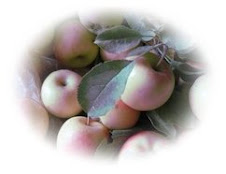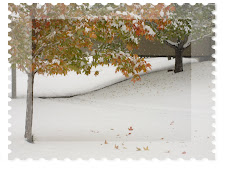
Romanian Sauerkraut(Varza Murata)... and a Peppery Sauerkraut Salad. Sometimes I feel the need to post recipes that aren't the "norm". Recipes that I make without relying on cookbooks or other means of online inspiration. As I am getting older, I realize that I tend to crave dishes that I once grew up with.... more so than before. Dishes that were the norm in our home. And just recently I thought of a salad I loved. The only thing was that it involved a homemade version of sauerkraut. Knew I needed to make it...
I've been meaning to post a recipe for sauerkraut for SUCH a long time... so this was the perfect opportunity. And when I say sauerkraut, I mean the Romanian version of sauerkraut, not the "normal" sauerkraut. The Romanian version uses a "wet" brine (water + salt)... different than the "dry" brine(salt only) that's normally used in sauerkraut making. And while many may not recommend a wet brine to be used when making sauerkraut, I find it works for me.
In reality this method has worked for many others, including my parents, my grandparents, my great-grandparents, and so on. It's the way us Romanians have "pickled" cabbage for generations... and continue to do so to this day. Our version of sauerkarut is also a bit different in that we ferment the cabbage as a whole(sometimes the head of cabbage is cut in half or quarters so that it would fit in the container). But we do not shred the cabbage before fermenting it, as you would normally with a dry brine. It's mainly because we use the cabbage leaves to make the well known Romanian sarmale(or stuffed cabbage rolls),... so the outer leaves need to stay intact.
I am not going to go into the specific scientific methods that are used to properly ferment cabbage. Nor am I going to write about the health benefits associated with eating sauerkraut. There are plenty of articles online that do that... My purpose is to share how I make my version of a "wet" brine sauerkraut. I'll share the methods I apply... and the method I found that works best for me.
I've also included a sauerkraut salad that both my husband and I grew up with.... the one I mentioned above. It was a salad I always looked forward to.... probably one of my favorite winter salads. While the outer leaves of the sauerkraut were used to make sarmale, the inner part of the cabbage would be shredded to make the salad I am sharing today. The sauerkraut salad accompanies most Romanian stews, but can also be used next to some sausage and beans... also works very well next to a portion of mashed potatoes and some sort of pan-fried meat. And instead of making a "sweet" version of cabbage and sausages(varza cu carnati), some or all of the fresh, raw cabbage can be substituted with sauerkraut.
In any case, this is how I make my sauerkraut(or varza murata).... yields a nice crunchy texture. We simply love it. Hope you enjoy...
Note: Optimum temperature for storage while cabbage ferments should be about 65-70 degF, give or take a few degrees. You don't want the temperature to be too cold or too hot.... it will not ferment right/or spoil.
Sauerkraut is done when it tastes like sauerkraut... But a good general rule to go by is that it takes about 4 weeks for cabbage to fully ferment at a 70 deg F storage... less if temp. is higher, and longer if temp. is lower.
~Salinity of brine should be between 2.5-3.5%...now I think mine is somewhere in between there:)... but it's best to keep it close to 3.5% salinity, as it yields sauerkraut that has good flavor and firm leaves. But here is a good chart you can follow depending on how much brine you need.

(Example: To make a 16 cup brine solution at 3.5% salinity, use 133 grams salt)
~ It is important to use a non-iodized salt, as iodine prevents the bacterial fermentation to occur that is needed to make sauerkraut.
~All cabbage must be kept submerged in the brine at all times...or you will have mold and spoilage. You can place thin wooden sticks(or thick dill stems), a plate with a weight, or a food grade freezer bag filled with a brine solution, to hold down the cabbage.
~ Foaming and frothing(bubbles) can be expected during the first week of fermentation. If you add the brine all the way to the top of the glass container, it may bubble over. You may want to place something underneath to catch it.
~ After the fermentation is complete, I transfer the container in my cold garage( benefit of living in MT), but you can place the cabbage in the fridge.
Homemade Sauerkraut(Varza Murata)
You will need:
~ A wide-mouth large glass container with lid~
3-4 medium whole cabbage heads, cored
16 cups water
1/2 cup(120 grams) Morton's kosher salt(do not use table salt)
2 bay leaves
bunch of fresh dill/stems
5-6 garlic cloves, cut in half
1-2 TBS whole peppercorns
Directions:
1. Heat water until it's hot but not boiling... and add salt. Stir to dissolve. Set aside.
2. Wash and clean glass container with boiling water. Rinse.
3. Cut the core from cabbage and remove any outer leaves that are too "disheveled":)... some cabbages may need to be cut in half or even quarters to fit inside the glass container. I cut all mine in half.
4. Place the cabbage inside container and add seasonings: garlic, bay leaves, dill, and peppercorns.
5. Pour brine over the cabbage, leaving an inch or so of space on top. Place a weight( or use wooden sticks/hard dill stems) to keep the cabbage submerged.
6. Cover with lid and allow to ferment at a 65-70 Deg F temp. for about 4 weeks. During the first few days, I use a 1/2 inch plastic tube that I place inside the container.... reaches the bottom. I then blow some air through the tube so as to circulate the brine throughout.... it's what my parents did, and so I do the same:). Sort of keeps the brine and seasoning mixed well inside.


Peppery Sauerkraut Salad... a favorite of mine!
Tip: While freshly sliced onions aren't normally used, I sometimes do use a bit. I tend to use a fresh sweet onion as it's a bit milder.
You will need:
1/2 head of sauerkraut cabbage
1/4 cup olive oil, or to taste
freshly ground pepper, to taste
Directions:
1. Shred cabbage by using a knife to cut thin strips.
2. Add oil and pepper... I use quite a bit of pepper, but taste and adjust to preference. The same goes with the oil.















25 comments:
Ellie, I'm so glad you posted this! Am facut varza murata in ultimii 3 ani, parintii mi-au spus cata sare pun ei in cotorul verzei si nu am putut sa controlez bine sarea. In primul an mi-a iesit bine, in anii urmatori varza s-a "molesit" partial (nu prea stiu alt cuvant pentru asta :))), dar am folosit zeama la gatit, imi place sa adaug putin in ciorbe. Eu am rugat pe vanzatorii de la un magazin grecesc sa imi pastreze butoiase de plastic in care au maslinele, si pe care de obicei le arunca dupa ce vand maslinele, si folosesc butoiasele, incape mai multa varza. Salata ta arata asa gustoasa, imi place varza murata intreaga in salata, are un gust mult diferit de sauerkraut. O zi frumoasa!
I am glad I could be of help, Mihaela:). Sa sti ca te inteleg cu procesul de murat varza. Si eu am intrebat pe parinti cata sare sa pun ... si problema tot mereu este ca cantitatile nu sant exact. Intro zi( cu ani in urma) am incercat si eu cu idea ca nu o sa imi iasa. Am tinut cantitatea de 16 cani de apa cu 7-8 linguri de sare.... asta mi-a fost mai usor de tinut minte( so you use half the amount of salt as you would water.... 16 cups water/8 TBS salt, 8 cups water/4 TBS salt, 4 cups water/2 TBS salt...and so on) si asta iti da o "salinity" de 3.5%( or foarte aproape)...care este necesar sa nu ai varza care se "flescaieste". Idea este buna si pentru muraturi, inca nu am incercat castarveti, dar ari trebui sa mearga si cu ei:).
Dar un lucru care am aflat( si am pus in post acuma), este ca nu poti folosi sare cu iod( iodized salt)... faptul ca iodul nu lasa ca varza sa se fermente bine...si se strica.
Oricum, sper sa iti iasa si tie. Ce bine ca ai putut lua niste butoiase, foarte frumos din partea vanzatorului.
Si mie imi place sa pun din zeama la ciorba... cateodata uit, si sotul imi aduce aminte( mai ales daca am in casa:).
Si agreez cu tine, salata de varza are un gust muuuult mai bun decat cel cumparat:)
Un weekend placut si tie:)!
Hi Ellie
I love varza murata! Actually, I love cabbage! The salt in Romania, sarea grunjoasa, is the one for pickles. I had problems here finding the good salt.
I have another method for varza murata, tastes different than the one in salty water but stuill very very good, no quantities needed
shred the cabbage, salt pretty generously but not ''ocna'' rub the salt to the cabagge and let it be for a few hours. The salted cabbage will produce quite a quantity of liquid. I take this cabagge put in in a big glass recipient (borcan de sticla) press it down, add dried dill and 'cimbru' and let it on the kichen counter for a few days up tto a week. The liquid should always cover the cabagge..sometimes I have to put a small plate on the cabbage and a glass filled with water to press it down so the shredded cabbage stays under
The taste is very special. It's great for varza a la cluj.
Have a great weekend!
In Montreal is snowing since yesterday and I'm really ready for spring now... what a dissapointment :)
Hi Andreea:)
Good to hear from you!
Yes, the method you describe is the typical "dry salt" method of brining the cabbage to make shredded sauerkraut. The salt extracts the water from the cabbage and makes the "brine". There is no need for water. Sometimes a weak brine solution is added if the cabbage doesn't have too much water(it's older). But a good reference point for the amount of salt that is needed for the "dry salt" brine method you brought up, is 3 TBS of kosher salt for 5 pounds of shredded cabbage.
But you already know how to make it:)... just thought to mention it here for those who don't know and care to try your version.
We also had snow this morning:)... I'm not thinking about Spring yet, because I find we most always skip it and go from winter to summer:).
Hope your weekend is still beautiful... this type of weather is conducive to baking bread and using the oven more... great for wintery days:)!
Ellie ,pentru reteta de" varza murata".Muuulte multumiri impreuna cu felicitari!Meriti din plin...
O zi binecuvantataiti doresc!
Speranta, Cu placere... si multumesc:)! Varza murata este asa de buna:)... Imi place tare mult... mai ales asta facuta de casa.
Multumesc pentru vizita... si iti doresc si tie o saptamana frumoasa.
Am facut varza dupa reteta ta si....a iesit foarte buna !!! M-am bucurat cand am vazut reteta la tine pe blog , asa ca am incercat-o ca de multa vreme vroiam sa fac acasa varza murata. Am incercat si metoda fara apa(doar sare) , dar nu se compara...
Mersi frumos. Am sa tin cont de tabelul cu salinitatea.
Si pt ca tot va laudati cu vremea de pe la voi, eu ce sa zic, in North Carolina in ultimele zile a fost vara...si e asa de frumos...!
Mihaela, Oh, cu placere:)... dar sa sti ca m-am bucurat si eu cand am citit mesajul tau... si sa aflu ca ai incercat reteta, si ca ti-a si placut:)!
Multumesc mult ca ai trecut pe la mine sa imi spui cum a mers reteta pentru tine.
Si mie la fel imi place varza murata cu sare si apa... nu stiu ce este, dar gustul este asa de bun, si nu trebuie sa desarezi varza. Adevarul este ca mie imi place si zeama de la varza murata cu apa si sare:)... nu este asa concentrata ca cea cu sare numai.
Oricum, m-am bucurat mult sa aud de la tine... mai ales ca a venit vara pe la voi:). Vara(55 degF:)) a venit si pe la noi, o saptamana in urma, dar nu a stat prea mult. Acum cand scriu, chiar ninje la noi:).
Iti doresc o duminica binecuvantata, tie si intreaga familie:)!
Hi Ellie,
Mutumesc for this! I married a Romanian woman and made this a few tomes with my father in law back in the village. IT tastes so different from the stuff in the store. Now if I could only find a recipe for Bors I'd be happy...
David, Oh, you are very welcome! For sure, the homemade version does NOT compare to the store-bought... I don't know what it is, but the homemade cabbage has better flavor all around.
Glad you enjoyed making the sauerkraut with your father-in-law... it's wonderful to be able to make it with someone else who knows what they are doing:). Glad you enjoy Romanian food.
As for the bors... hmm, I'm sure there are recipes online, many in Romanian. Here's a link to a Romanian one(though I personally have't tried it yet).
http://anditudor.blogspot.com/2012/05/bors-de-casa.html
And here is another recipe(not yet tried) in English I found on a forum:
http://www.culinar.ro/forum/continut/Reteta-ta-preferata/14496/English-Bors-recipe/
Hope that helps a bit...
Thanks so much for stopping by.
I love the ideas you present. One problem, your salinity chart is not showing up online.
John, The salinity chart shows up when I load up the page on my end... it is rather light in color lilac with white writing.
You may want to refresh the page(I'm sure you know that:)... but it seems to be working on my end.
Hope that helps...
I am also from Romania. I love your "Cozonac" recipe and have made it a few times until, according to my mother, I have achieved perfection.
Next, I am going to try your pickled cabbage head--Varza Murata--I am sure I will also accomplish perfection.
Carmen
PS--Love reading about your childhood experiences; make me feel as if I were home again.
Carmen, Awww... thanks for stopping by and sharing! Loved to hear that you tried the cozonac and enjoyed it. I sure hope that you will enjoy the varza murata as well... feel free to add a bit more salt if needed.
Made my day to hear that I was able to bring in a bit of memories from home to you:)...
Really appreciate you stopping by. Have a wonderful day!
Hello Ellie,
Astazi e ziua mare in care ma aventurez in facutul verzei murate. Si eu tot la food grade bucket am sa o pregatesc, am renuntat la cautat butoi de lemn. Nu am multa varza, doar cateva dar nici nu am unde sa o tin la rece, nu am garaj... Si cu toate ca si Northern Michigan e rece, cred ca e prea rece sa o pun in shed. Asa ca doar cateva bucati deocamdata. In borcanele mari de sticla am ardei umpluti cu varza. I-am pus cam de 3 saptamani si zeama e acum acra bine, nu am curaj sa scot ardeii inca. :D
Ma bucur ca am gasit acest blog, te-am adaugat la favorites.
Despre bors sa stii ca am facut si a iesit foarte bun. Din tarate de grau si faina de malai leustean in el. Nu am avut huste dar am adaugat o lingurita de sourdough starter. It worked.
Have a great day.
Dana, Thank you so much for stopping by and sharing:)! M-am bucurat tare mult sa aud de la tine... si ca ai inceput sa faci bunatati pentru iarna. Sper sa ai varza murata in curand... daca este mai cald in casa, o sa se acreasca mai repede. Stiu ca la parinti le merge bine si in vara. Oricum, se vede ca sti sa pui la acrit:)... ardei umpluti cu varza imi aduce aminte de copilarie, cand parintii acreau tot feluri de vegetables, ardei umpluti cu varza, sau si cu o amestecatura de varza si morcovi.... Ce imi placea!
Thank you for sharing your technique for making bors, it sounds like you have succeeded. I still have yet to try it:)... I remember my mom making it when I was young... I've been using lemon juice as an alternative, but nothing beats bors!
Ma bucur ca pot fi de inspiratie cu retetele, dar stiu ca you are most capable and creative in the kitchen)!!
Inca odata, multumesc pentru ca te-ai oprit nitel:)... suces cu varza murata. Enjoy!
Wish I could send you a picture of the cabbage fermenting nicely, it got to the smellier time but I know it's coming along well. I added 3 golden beets, sliced thick for color. I will let you know how it came out. I can't wait to have it.
My peppers came out amazing. Out of this world beauties, and seriously sour without any addition of vinegar. Everyone I know and asked told me it won't work without vinegar but I always gotta try to improve. :D So far, I was lucky. I also added carrot to the cabbage and a little bit of finely chopped celery leaves. Instead of our yellow pepers or white as they call them around here, I used nicely ripped poblano peppers from one of my neighboring small farms.I figured that I like a bit of heat and instead of addin spicy peppers to the brine I will use the poblanos. Great idea, (daca pot sa ma laud pe mine insumi) as they turned out not spicy, with a really really light bite. And because they sat in the bushel unattended for a week while I nursed a stomach bug, they got really red and pretty. Makes for pretty food.
Thank you for guiding me in my whole cabbage experience, you are in my favorites, and I will visit quite often.
Oh, and if you'd like to try making bors I will be more than happy to help. Right now I am on a kvaas kick. Or as I know it bors acru din sfecla> :) Very easy to make and so yummy.
Hi Dana, Thank you so much for taking the time to share your fermenting experience... I love to hear from my readers and the success they have in the kitchen:). However, it looks like you are having too much fun:)... sounds like excellent probiotic foods ready for the eating soon.
Love, love your experimenting:)... the poblanos and beets are an awesome addition. My dad loves to make sour cabbage and sometimes adds unique veggies too. Lately he adds tomatillos for the gogonele:). I've had them and they tasted wonderful!
I haven't tried making bors, nor kvaas... but have ventured into kefir making for a bit:). Shall have to look into it soon...
Dear Ellie,
Thank you for posting this recipe in such detail. I have wanted to have this salad for years since traveling in Romania 20 years back. It was winter and not much variety of food could be found and being mostly vegetarian all the meat was a switch. This varza was such a wonderful food, it made my belly feel so good and after a few days I couldn’t get enough of it.
I will certainly make it.
thanks again,
Sita
Hi Ellie,
I’m in the process of making your pickled cabbage and have a few questions.
I have metal lids on my jars, is that ok for the salt brine?
Does the salt brine need to completely cool before adding to the cabbage stuffed in the jar?
Thanks,
Sita
Hi Sita, Sorry for the late answer... I hope you enjoy the sauerkraut! The brine doesn’t necessarily have to cool completely... if warm it is ok. I would cover the lid with a plastic warp of sorts(thicker) before adding the metal lid. Hope the result will be great😊
Hello Ellie! Thanks for sharing. I am at last stages but I notice a garlic clove floated up to water level. There is now some white cloudiness there, not like the salt where it evaporates a bit. Is this garlic coming apart or maybe do we have mold? Not sure how to test if it is safe?
Hi, Ellie. There is some cloudiness where a clove of garlic floated to water line. How do we check if it is mold or just garlic breaking apart? Used high salinity brine you commend but lid hasn't got a great seal. Only a few bubbles seen at almost four weeks.
Thanks so much for sharing!!
Hello Maria, Thanks stopping by! The white cloudiness you are describing is usually part of the fermentation process... Even if a clove has started floating to the top, it should be fine. Sounds to me like you did just fine... mold will be fuzzy and varies in color. A white film is usually a good yeast that fermented veggies produce... Here is a link you can read for more information. Hope it will be helpful to you. https://www.fermentedfoodlab.com/how-to-prevent-mold-when-fermenting-vegetables/
Also, the bubble should subside at 4 weeks... meaning is it probably getting near to being well fermented😊.
Post a Comment